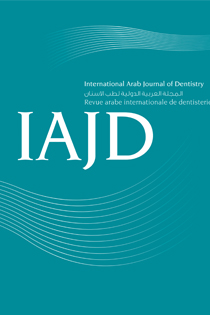Abstract
Numerous studies have compared dentures fabricated using neutral zone and conventional techniques. However, studies comparing swallowing and phonetic techniques for location and shape assessment of the neutral zone using the same material could not be found in the literature.The purpose of this study was to compare the outline form of the phonetic and swallowing neutral zone impression techniques for the same subject. Five edentulous patients with advanced mandibular ridge resorption were included in this study. For each subject, 2 trays were prepared in autopolymerizing acrylic resin. Impressions were made using the same autopolymerizing resin. Nonetheless, one method used phonetics to shape the neutral zone while the second used swallowing. The resulting neutral zone impressions were leveled at the same occlusal height. Lines indicating molar, premolar, canine regions and the midline were marked on one impression and duplicated onto the cast and onto the second impression. Zinc oxide paste was used to mark the lines made on the impressions. Vertical cuts were made using cone beam technology and cuts showing zinc oxide were selected. After measurement of the occlusal height, cuts were superimposed and measured to determine shifting of the buccal and lingualcontours. Piezography was found significantly larger than the neutral zone in the right molar and premolar regions whereas the neutral zone was found significantly larger in the left canine region. Buccal shifting measurement showed a significantly lingual position of the neutral zone in the right molar and premolar regions, a significantly buccal position of the neutral zone in the right and left canine regions and the midline. Lingual shifting measurement showed a significantly lingual position of the neutral zone in the right molar and premolar regions, a buccal positioning of the left molar, right canine regions and the midline (p ≤ 0.005). Within the limitations of the present study, swallowing and phonetics showed different positions of the neutral zone. The phonetic neutral zone appeared to be larger than the swallowing neutral zone with a more lingual position of the anterior region.

